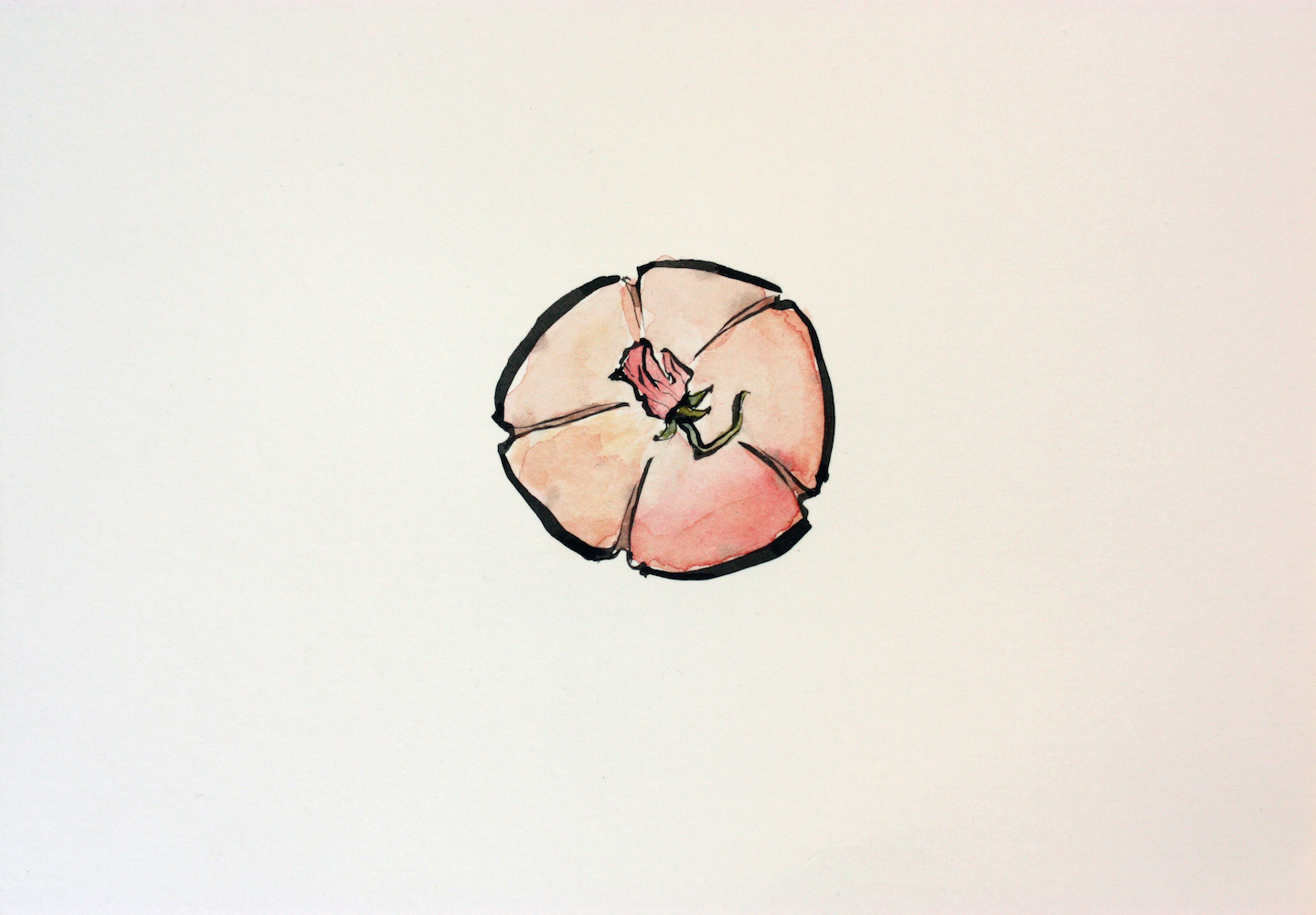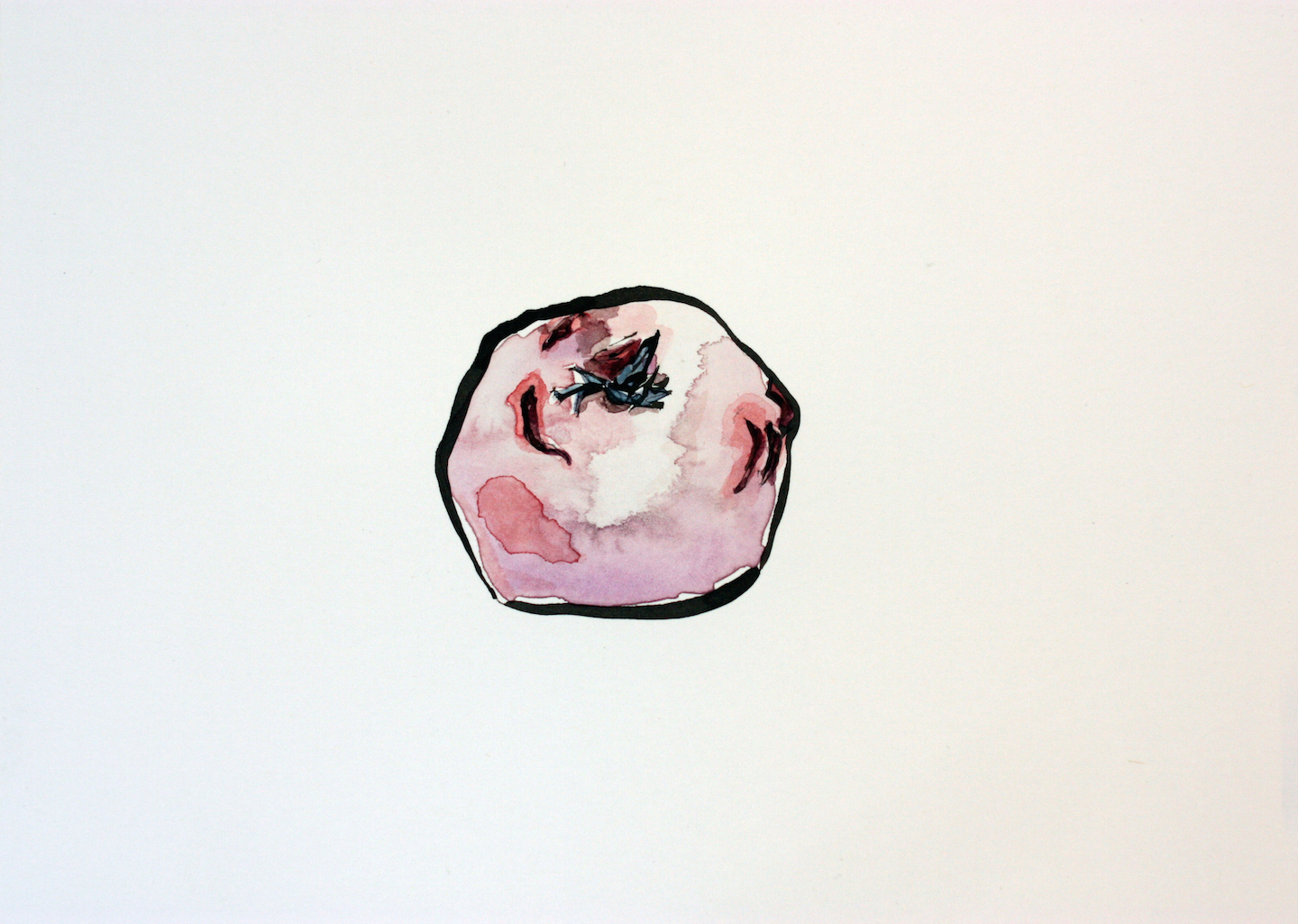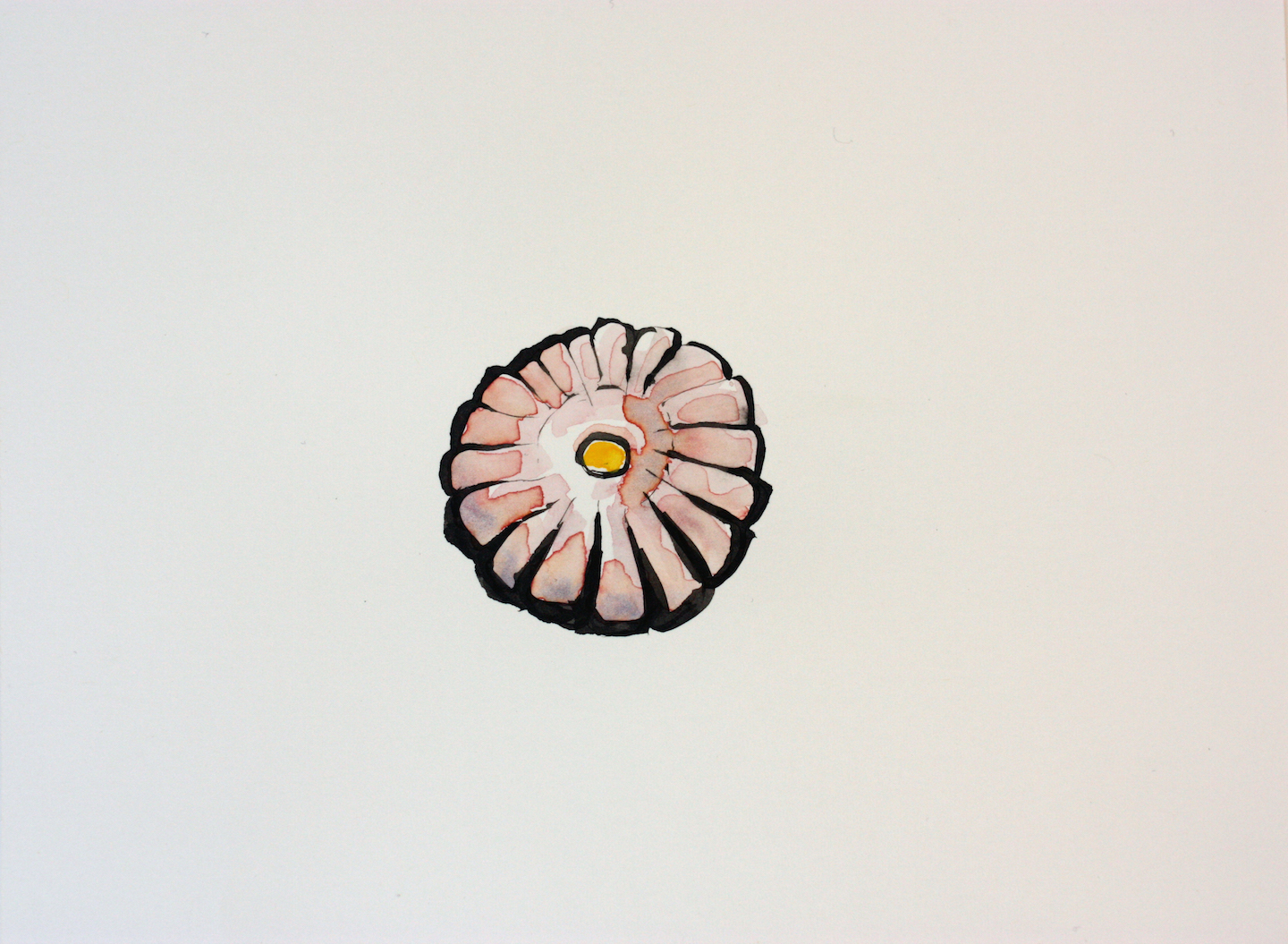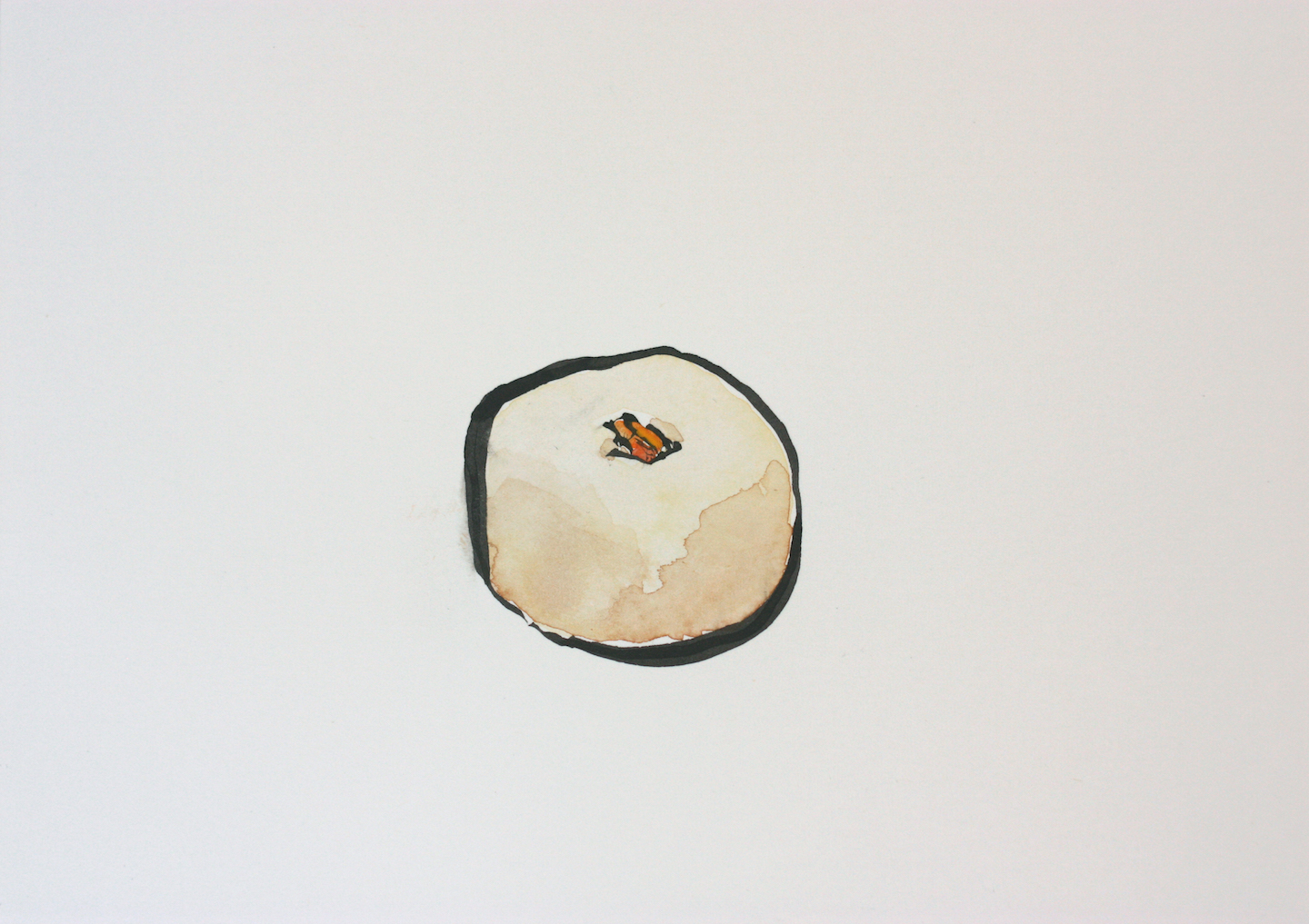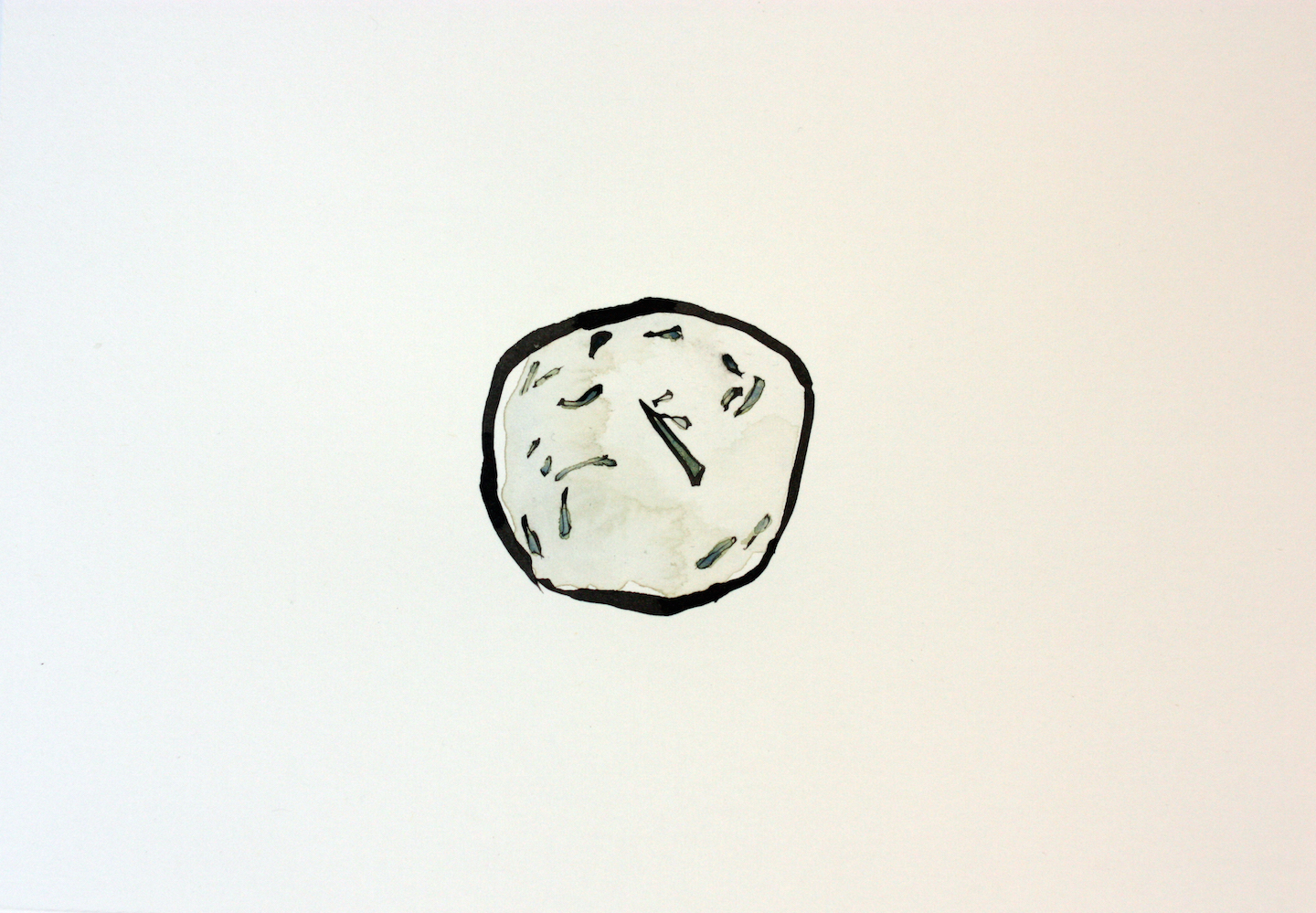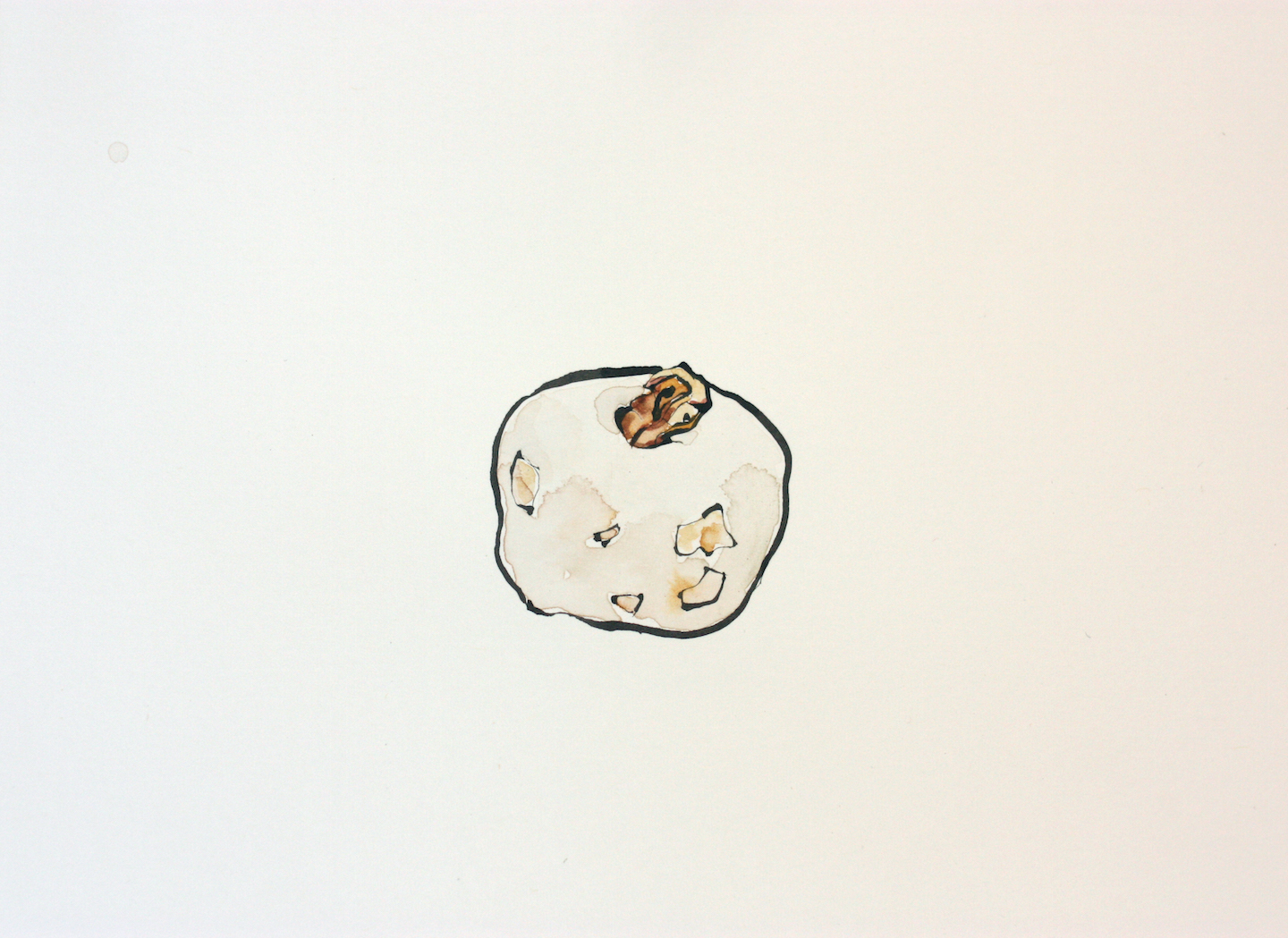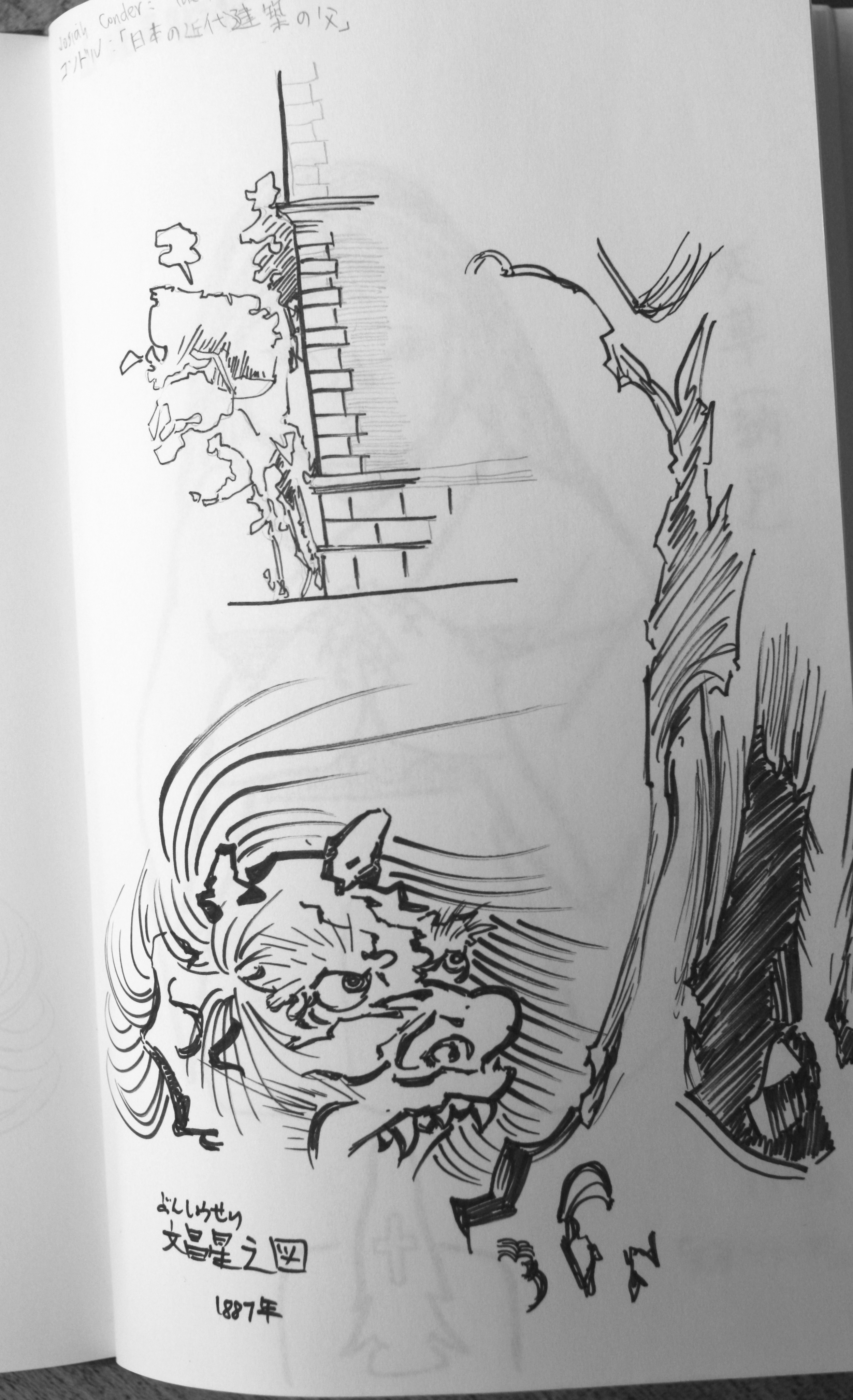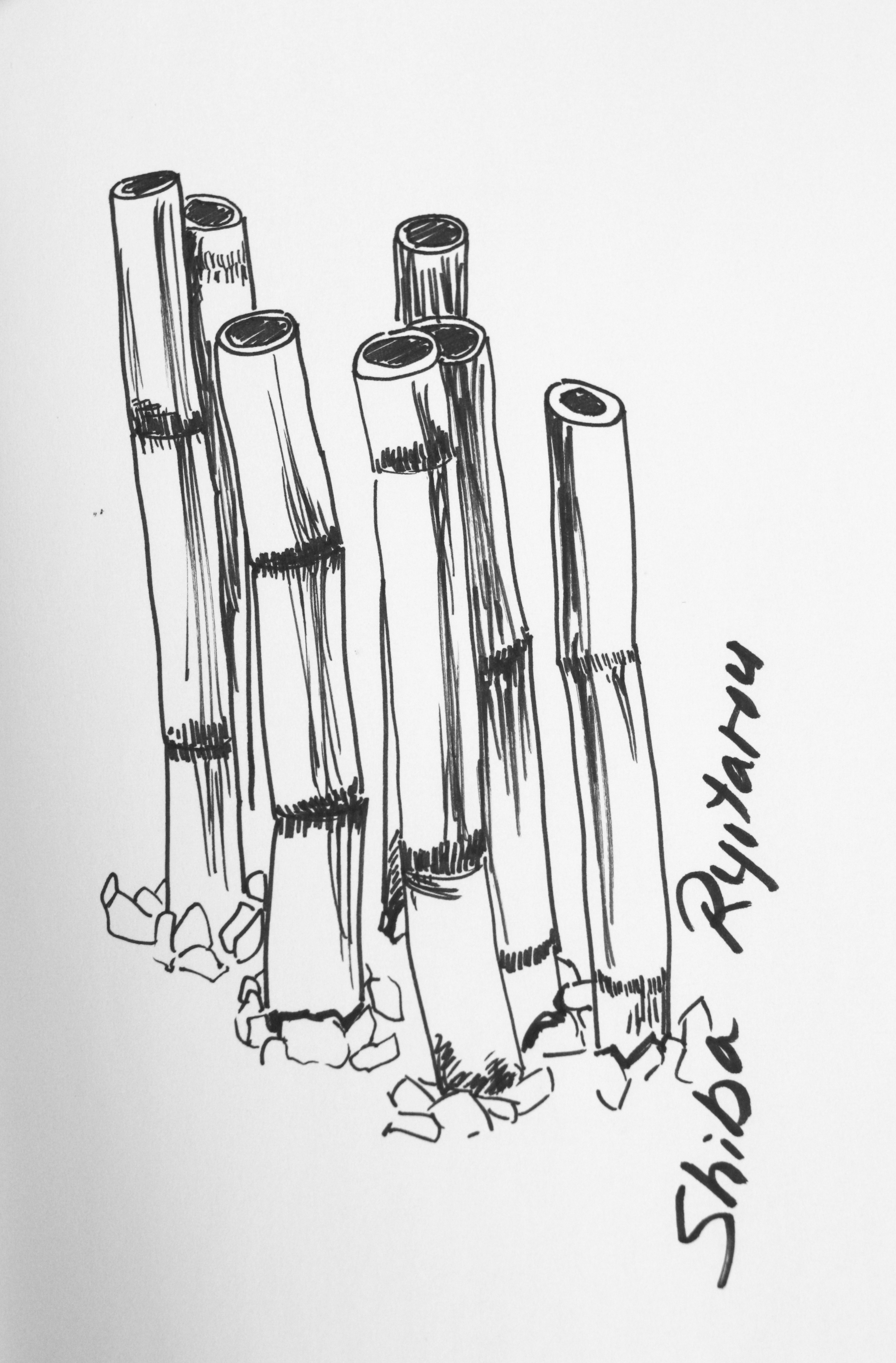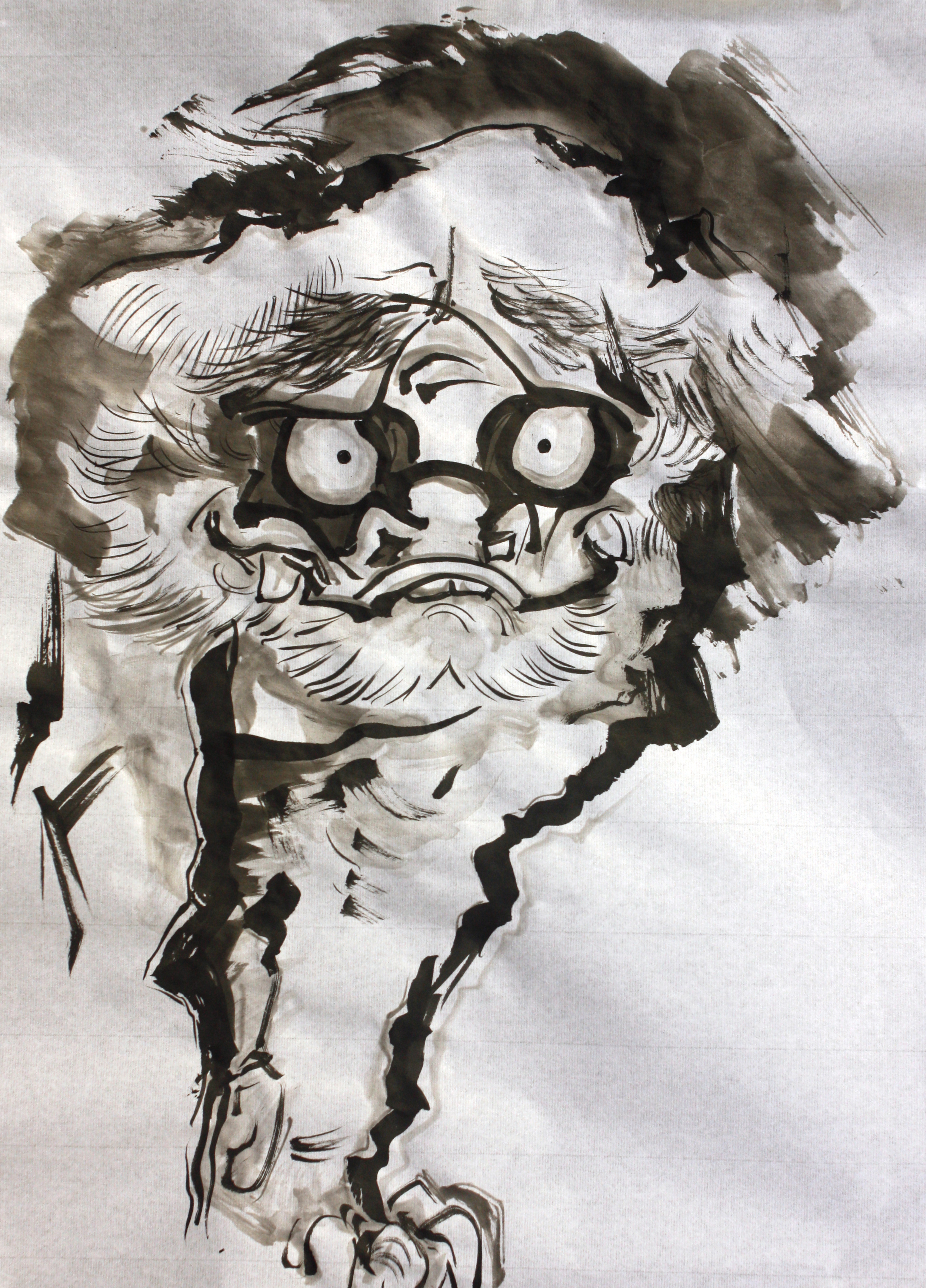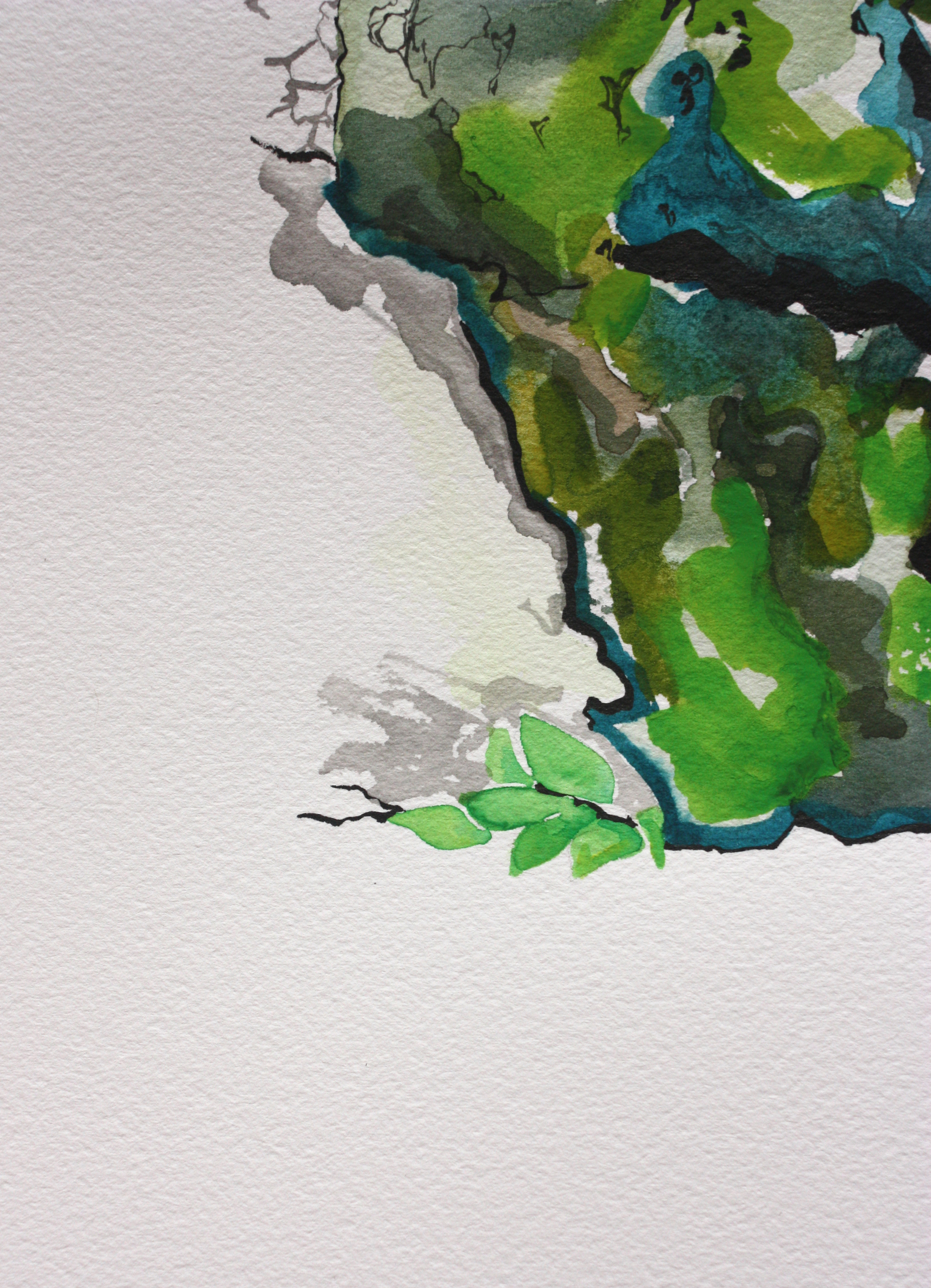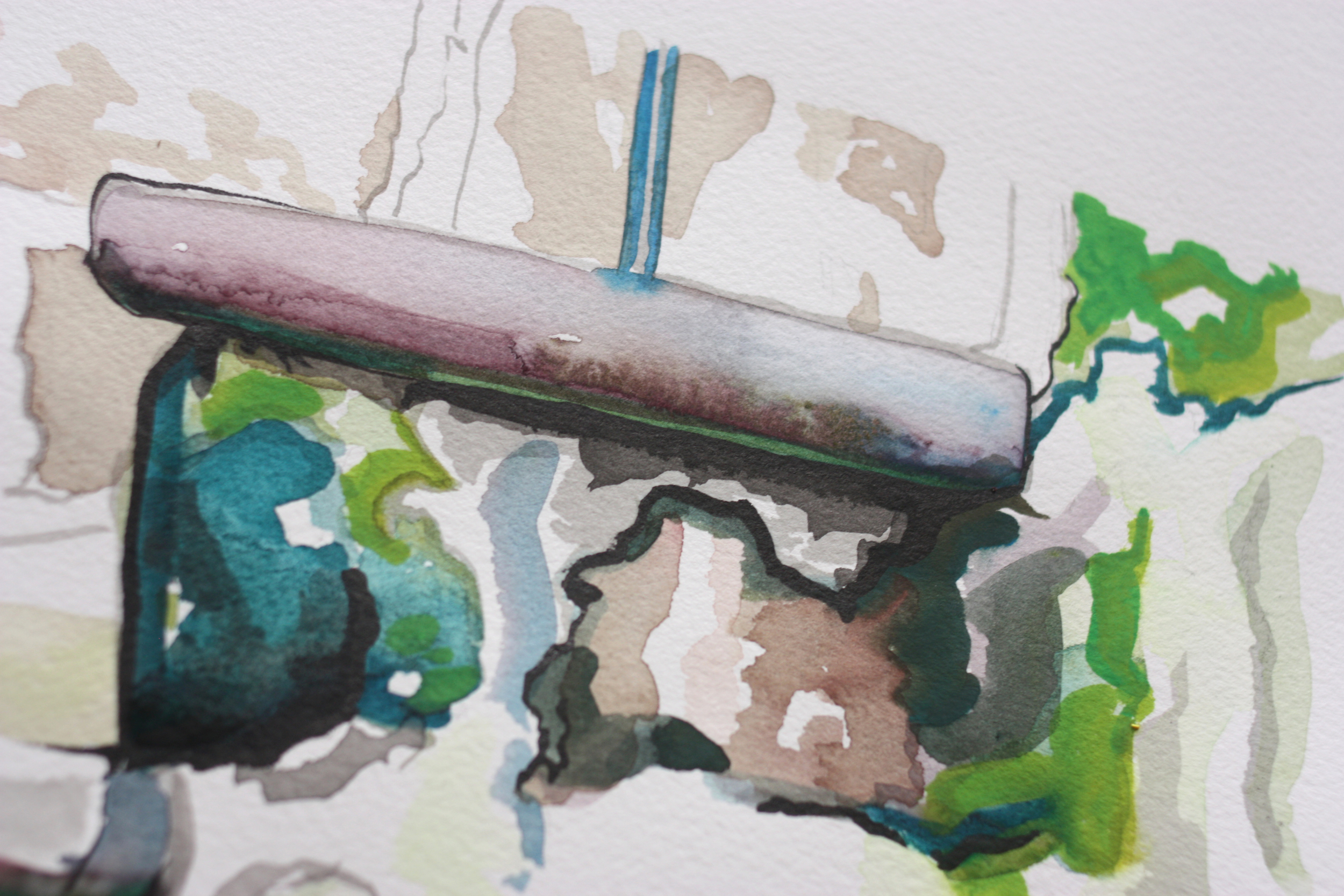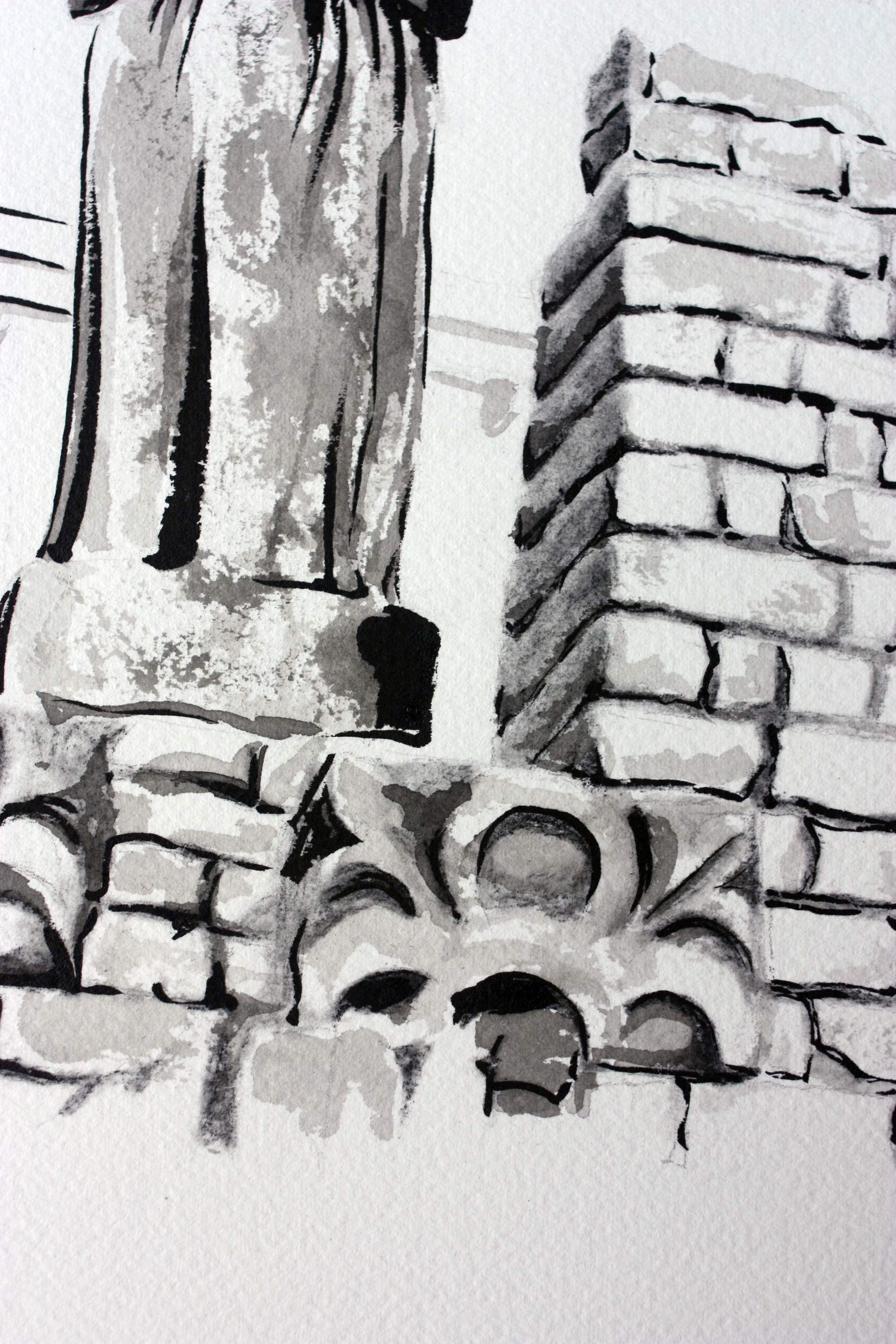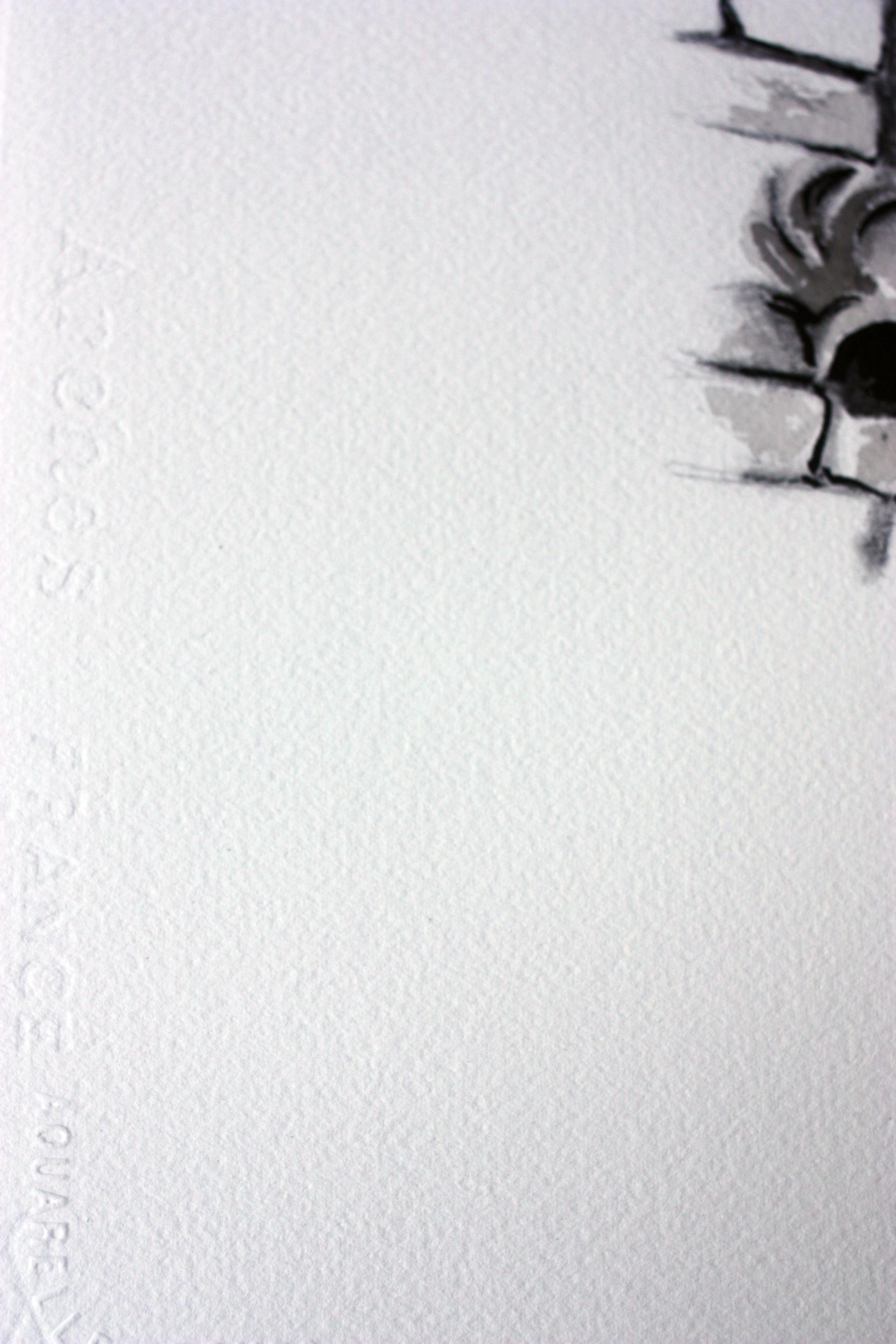If I had no arms or legs and were glued to a rock, I think I would appreciate this phrase more. The high waters would indeed be the happiest of times.
Read More25/50 : What to do with"28 Thousand Days"
Our days are numbered. Alicia Keys reminded me the other day--"28 Thousand Days"? Maybe. Maybe not. Often not.
Some changes at work make me more grateful for and mindful of the people I see daily. It's not guaranteed to continue.
I painted this stack of pants for my boss as a goodbye and thank you gift to him- he reminded us of the right perspective, that we are after all "just selling pants."(written in Japanese in the painting since my job is exactly this translation process)
"Just Selling Pants"
Psalm 39:4-7
Show me, Lord, my life's end and the number of my days; let me know how fleeting my life is.
You have made my days a mere handbreadth; the span of my years is as nothing before you.
Everyone is but a breath, even those who seem secure.
Surely everyone goes around like a mere phantom; in vain they rush about, heaping up wealth without knowing whose it will finally be.
But now, Lord, what do I look for?
My hope is in you.
By hoping and trusting in God, who is eternal, it puts my petty daily troubles (which wouldn't even make a visible dot on a timeline of eternity) into perspective. They will pass, but how I respond and treat people in the meantime- those things last longer. While my boss (who is on to other adventures) was incredible at his job, his love for people and care for coworkers as family set him apart and impacted everyone.
"Let all that you do be done in love."
1 Corinthians 16:14
ALL? Yup. God can work miracles even in a hard heart like mine, so he can make the impossible a reality.
24/50: How about a pigeon?
My sister who lives in London told me about a Chinatown scandal in which a restaurant in London Chinatown was serving pigeon. Not the farmed kind for eating. I mean, free range and local-- rooftop local!
I suppose they were calling it "squab"-- a delicacy. Not just pigeon.
Street pigeons would never make it on my plate (by choice), much less my "want to draw" list. On a practical level, they're fidgety and hard to draw. But beyond that, I don't like the way they look or function so they're not worthy of study.
If I dig a little deeper: I don't consider their Maker.
But this guy did, and that left an impression on me. I took a photo of him when I saw this scene in Nagasaki, Japan. Is this elderly Japanese man thinking, "God created this creature so I should study it?" Statistically based on the religious environment in Japan, I doubt it.
There's a lot God can teach us through people-- through those who may point out things that are usually ignored. Maybe through artists who have "weird" perspectives.
So, how about a pigeon? Perhaps not for dinner at a restaurant in Chinatown in London. But maybe to draw, maybe to point me to their Maker.
"Worthy are you, our Lord and our God, to receive glory and honor and power; for you created all things, and because of your will they existed, and were created." Revelation 4:11
If creation in general isn't enough of a link to the Creator, here's a bonus fact:
Pigeons are in the same family as doves.
As I continue with this painting, it'll remind me of seeing things as made-by-God, not based on my judgment of if it's worthy of attention or not.
"You are the Lord, you alone. You have made heaven, the heaven of heavens, with all their host, the earth and all that is on it, the seas and all that is in them; and you preserve all of them; and the host of heaven worships you." Nehemiah 9:6
Progress on this painting to come (once I actually make that progress).
12/50 : Cook, eat, paint mochi
In less than five minutes with me the subject of food is likely to come up in conversation. I love how it can represent culture, creativity, tradition, and most importantly the creative mind of our Creator. Taste buds, colors, textures, variety...most of it isn't for survival but for enjoyment. What a gift! Sadly, there is no place around to buy traditional Japanese sweets. Some markets and shops have mochi but they are often unnaturally bright colored, excessively sweet, or clumsily shaped. So, if I want them, I have to make them.
Sakura (salted cherry blossom) nerikiri with sakura mixed into red bean filling
Most Japanese confections are made of sweet rice, beans, and sugar, but there are hundreds of variations in the grind of sweet rice, bean type, sugar type and amount, and other mix-ins.
Just like sushi chefs, woodworkers, or printmakers, Japanese sweets are made by craftsmen who have learned the trade after years of training. I would love to be an apprentice! But in the mean time youtube and cookbooks will suffice. I've been experimenting a lot, and am thinking about a mochi catering business on the side. We'll see. I have too many "side business" ideas.
In case I decide to go with this side business plan, I would need a business card. I photographed the Japanese sweets I made so I painted those photographs (since the sweets are long gone in my stomach).
Hibiscus flower mochi with red bean
Things I like to make often have Japanese and Western influences [for instance, the hibiscus flower mochi above with red bean filling], so I thought the name "Hapa Kitchen" (hapa="mixed," usually refers to mixed Asian ethnicity) was appropriate. It was already taken by a hapa supper club network.
Chrysanthemum nerikiri with lima bean filling
Candied orange peel (homemade) mixed into lima bean filling
Sencha mochi with red bean
Walnut mochi with red bean
Most likely more food paintings to come!
10/50 : "Mindless browsing" is an oxymoron
I realized something after four weeks spent recently with a smartphone that became useful only as a camera or a map. At first I thought I gained time from not browsing mindlessly on Facebook or instagram, or looking up random facts on the internet. But it wasn't time-- it was focus. I had time during breaks from grad school to paint. On weekends even during the semester, I could take a day off. So why couldn't I focus enough to paint the Japanese history that I wanted to? I'm certain I was distracted by constant input.
In Tokyo, I only had wifi access a handful of times with a painfully slow connection at a convenience store. My email loaded at a friend's home while my phone was deep in my bag in another room so I read it on the train on my way home. But I couldn't reply. It was awfully inconvenient to solidify plans and make phone calls, hunting down the few remaining pay phones somewhere in a department store or train station. But what I gained from being semi-disconnected was worth it: focus.
Focus- that's why I sketched in Japan. Especially when out of consistent practice, it takes a surprising amount of concentration to look at something and repeat the shapes on paper. Below are some sketches from Japan:
Museum 1: Ukiyo-e Ota Memorial Museum of Art // Exhibition: Villains in Ukiyo-e
Museum 2: Mitsubishi Ichigokan Museum // Exhibition: Kyosai - Master Painter and his Student Josiah Conder
Museum 3: Yamatane Museum of Art // Exhibition: Maeda Seison and the Japanese Art Institute
I was both shocked and thrilled to see a painting from a series about the hidden Japanese Christians (the subject of my master's thesis) so I sketched the painting. I'll look up more about this artist!
Last sketch, not at a museum, just waiting for a friend and saw some bamboo in a hotel. Also a famous author's name whose historical narrative books I bought to read.
The day I left I went to see the underground Japanese Christian artifacts in the Tokyo National Museum, but read carefully instead of sketching the images.
I wasn't mentally distracted by 20 ways to redecorate, 50 recipes I must make now, or 10 miraculous exercises (that I'll probably never do). Possibly more significantly, I wasn't distracted by what everyone else was doing. My life didn't suffer a bit in the few weeks of not being up-to-date in other people's business. Actually, I think it improved.
I like to be in touch with friends and the convenience of a cell phone, but I also like the mental space available when it's not glued to my hand. Now I have to consciously keep it in a separate room (with the ringer on loud), to use it for contact but not for "mindless" browsing. At least for me, I finally see that "mindless browsing" is an oxymoron. Perhaps it has to do with being a visual person, or maybe it's universal and I'm just slow to realize it. But for the first time in 4 years, I'm sketching, researching, and planning out my next painting continuing my Japanese martyrs' series.
So far I have my Japanese martyr subject (a family of 3 from an island north of Nagasaki) and the western painting parallel to work from (most likely, the Flight to Egypt).
It's humbling to realize how limited my mental capacity is! God's infinite abilities are more awe-inspiring when I see how limited I am.
Great is our Lord, and abundant in power; his understanding is beyond measure. Psalm 147:5
But Jesus looked at them and said, "With man this is impossible, but with God all things are possible." Matthew 19:26
I can't take in much at once, and it takes me weeks to even realize that! But God has no limit.
Can you find out the deep things of God? Can you find out the limit of the Almighty?
It is higher than heaven- what can you do? Deeper than Sheol - what can you know?
Its measure is longer than the earth and broader than the sea. Job 11:7-9
9/50 : The Job Hunt
In theory, I knew Japanese art history would be limited in terms of employment (at least in a related field). BUT I only need one job so I don't need tons of openings. (Anyone who knows anything about probability will likely laugh at that statement, but I'm sticking with it.) Nevertheless, applications and rejections are discouraging. Granted I've spent more time abroad than at home since graduating on May 22, but sometimes we forget about facts and reality and get lost in our heads. I started painting this man, copying from a book of Japanese paintings. His smug expression didn't quite cut it so I moved on.
...and here's my attempt to practice brush strokes, washes, and vent those discouraged feelings:
The painting and photos are from before I left for Japan. I returned last week and am slowly recovering from serious jet lag BUT after many museum visits and discovering many Japanese painting stores in Tokyo, my love of painting is renewed and I can smile at this beast painting. I sketched more in two weeks there than I had in months combined! I come up with all sorts of excuses why I "can't" paint but behind it all is fear and pride:
"If I don't have the perfect conditions (rest, mental capacity, organization, space, cleanliness, materials) then I will not make the perfect painting, and since I can't bear to be less than perfect I will not try." How silly when it's spelled out like that!
The best way to do it, is to do it! ~Amelia Earhart
Just like reading through the Bible in Japanese from Genesis, I could spend ages strategizing the best plan but it's much more effective to just sit down and do it every morning. My dad calls me " a creature of habit." I keep my Japanese Bible in the same spot on top of my recipe box. I make the same breakfast/coffee to accompany reading. I sit in the same chair, and open up where I left off the day before. But at the same time my curiosity for new experiences is insatiable. Maybe the daily routine is like a foundation to jump off of to explore, learn, experience new things.
Now in the beginning of 1 Chronicles, the genealogies aren't as exciting to read through as were the stories of friendship and God speaking to his people, but the best way to read through is to read through so I have to keep chugging along. Same with painting! I'll make it a habit.
8/50 : Art, vocation, and a terrible painting
First, a brief update since I've been MIA for a month:
- graduated with a Master's in Art History (Japanese Art History emphasis)
- travelled to Thailand and Cambodia
Now I'm applying to jobs related to Japanese, writing, history, cultural exchange, and art... decisive as usual.
The point of writing about my painting is for exposure- to fight perfectionism. Sometimes, oftentimes, my paintings suck. After writing my thesis for grad school, I see how painting and writing are the same. As author E.B. White says, "A writer who waits for ideal conditions under which to work will die without putting a word on paper." So forget the migraine, the not-helpful single AC unit two rooms away (how dare I complain about having more than 1 room??), and anxiety about an interview on Friday. I'm not a creative genius. No one is, we have to work at it. It feels like I've never held a brush or used this ink before but it'll get better. My hands will remember how to control the brush and ink.
Working with your hands, or working in general, must be done with diligence and excellence: Whatever you do, work heartily, as for the Lord and not for men (Col 3:23). In Art and the Bible, Francis Schaeffer expands on this and also writes on how to think about contemporary art:
“What is the place of art in the Christian life? Is art- especially the fine arts- simply a way to bring worldliness in through the back door? What about sculpture or drama, music or painting? Do these have any place in the Christian life? Shouldn't a Christian focus his gaze steadily on "religious things" alone and forget about art and culture? As evangelical Christians, we have tended to relegate art to the very fringe of life. The rest of human life we feel is more important. Despite our constant talk about the lordship of Christ, we have narrowed its scope to a very small area of reality. We have misunderstood the concept of the lordship of Christ over the whole man and the whole of the universe and have not taken to us the riches that the Bible gives us for ourselves, for our lives, and for our culture. The lordship of Christ over the whole of life means that there are no platonic areas in Christianity, no dichotomy or hierarchy between the body and the soul. God made the body as well as the soul, and redemption is for the whole man.”
While I say I no longer believe in the myth of the spontaneous creative genius, my actions suggest otherwise. So it was time to begin painting #2 of my series of 10 Nagasaki paintings. Since it has been over a month since painting and I'm down to my last precious piece of Arches watercolor paper, a practice sketch was necessary. When I practice freehand sketches, I always work from the top left to bottom right. Maybe it's because I'm a lefty. One look at the left and right side of this painting make it very clear what difference a few practice strokes can make:
Started at the top left with this sloppy cross:
Ended on the right, much different than the starting point:
Moral of the story: KEEP PAINTING.
The drafting table is now raised as a standing table (maybe hard to tell since my height doesn't change significantly from sitting to standing) which makes it much easier to paint!
7/50 : "You should quit"
Part of a ridiculous conversation (in retrospect) that Page went along with for my benefit:
"I can't paint that well compared to a lot of people..."
"Then you should quit."
"What??"
"Yeah you should probably quit now."
"......Oooh I get it. You mean I only have two options: quit painting or try painting."
"Right."
[Disclaimer: this sort of cut and dry decision-making isn't necessarily effective for all personality types]
Thank God for a decisive man. If I can't quit, then I will paint. No more occasional dabbling which only causes frustration because I don't improve.
In all labor there is profit, but mere talk leads only to poverty. [Proverbs 14:23]
I did my first art show submission! Similar to the job application process, you don't get accepted to most, but my excitement is in starting this submission process (even though it would be great to be accepted of course). I thought of submitting a new piece and sat down to paint it. But I had to do it in two sittings to let the first layer dry, so I ended up only submitting older pieces. (click to see: wall paintings and drawings from Italy) The new one is a painting of mossy steps from a photo I took in Orvieto, Italy.
What if I try my hardest, make tons of paintings, try to sell them, and then "fail"? I don't know... But what if I succeed?
I haven't made a firm decision on post-graduate school plans since I'm still trying to finish up. I'm still looking into other jobs. But I've rearranged my studio space (again), this time for easy access to painting materials instead of research books.
My soul, wait in silence for God only, for my hope is from Him.
He only is my rock and my salvation, my stronghold; I shall not be shaken.
On God my salvation and my glory rest; the rock of my strength, my refuge is in God.
Trust in Him at all times, O people; pour out your heart before Him; God is a refuge for us. [Psalm 62:5-12]
Decision-making times like these make it more obvious that I ALWAYS need to rest in my loving, faithful Creator who gives me every breath, and is guiding my steps.
I have a lifelong goal for what I want to paint, but here's a start in that direction: Make a series of 10.
10 locations in/around Nagasaki.
- Urakami Cathedral and ruins (see previous entry)
- Xavier's Cathedral
- Church and temple scene
- Hara Castle and Amakusa Shiro statue
- Unzen hot springs : torture/martyrdom site
- Rusted gate
- Oura Church
- Covered bamboo bench
- Man with pigeons
- Megane bridge
"The greater danger for most of us lies not in setting our aim too high and falling short; but in setting our aim too low, and achieving our mark." ~Michelangelo
6/50 : Headless Statues and Productive Procrastination
How clean ((some part of)) our apartment becomes when I have a daunting task ahead is remarkable. I think I may be able to see my reflection in the sink! My eye shadow collection is immaculate. In the past 13 years of wearing makeup, I have never before wiped down the outside of every single makeup item. And why not dust the crevices of my jewelry armoire. I assume I am not alone in this "productive" procrastination behavior...?
I'm no math major but for 50 paintings in 2015, by the end of April (now) I realize I should be close to 17/50 rather than 6/50. But I've been stuck in the 1600s in Japanese history for the past month with some furious thesis writing and editing. It's almost done!
Anyways, slow and steady to 50. This is a painting from a photo I took of Urakami Cathedral in Nagasaki.
What is it : The statues (like the one painted) are post-atomic bomb remains from the original late nineteenth century construction (built right after the anti-Christian ban was lifted in Japan). The location was specifically chosen because it was for hundreds of years where local Japanese people (including underground Christians) had to annually step on a Christian icon to prove their conformity to government regulated Buddhist religion.
The atomic bomb hit during Thursday mass in the cathedral. When deciding about rebuilding it later, the government wanted to keep the site as a memorial and move locations, but because of the importance of that specific place in the hundreds of years of underground Christian history, the local Christians insisted to keep it there and rebuild it in its original location.
They're headless and are a visible reminder of destruction... but the church is back. Studying the history of Christianity in Japan, I'm reminded over and over:
- Psalm 86:15 "But you, O Lord, are a God merciful and gracious, slow to anger and abounding in steadfast love and faithfulness."
- How different the same faith can look across cultures, and reconsider what is "normal" to me
My "productive" procrastination even extended to blog writing! It's been so long I got stuck mid-post. I started to read about WW2 writers, added Takashi Nagai's "Bells of Nagasaki" to my growing list of books to read after grad school...and so on.
Last week I read the book Art and Fear, basically a must-read for all artists and writers, which I had been putting off as if I had no fear in making art. The author read my mind, and it was comforting. The need for this blog for me to get moving shows how paralyzing that fear actually was! "I'm out of practice." "I haven't painted anything I'm thrilled about in a long time." "I keep messing them up."
"Your materials are, in fact, one of the few elements of art making you can reasonably hope to control... Uncertainty is the essential, inevitable and all-pervasive companion to your desire to make art. And tolerance for uncertainty is the pre-requisite to succeeding." (Art and Fear, Chapter 2)
I know Arches paper will deliver:
I moved from oil painting to ink painting because of the uncertainty. Ink quickly splatters, makes unexpected watermarks, acts differently on different surfaces, and forces my controlling nature to give in. You can go over and over an oil painting to "perfect" it, but you can't retouch an ink painting. That's the beauty of it! But each stroke can be paralyzing. What if I mess up? What if I ruin it and waste the past 10 hours spent on this? I will only learn by making those mistakes!
Summary tip for any creative activity {{ crafting -- cooking -- drawing -- etc }}
MESS UP. It's the best way to learn a craft. If it helps at all, I will admit it's terrifying for this perfectionistic control freak.



